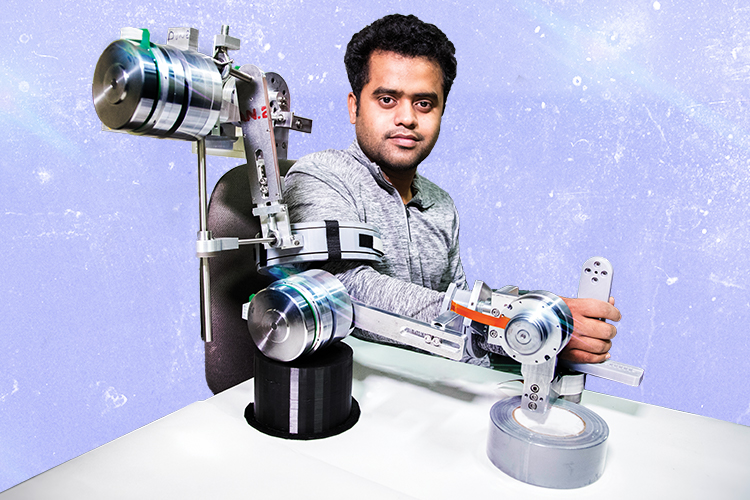Exoskeleton robotics are wearable frameworks that cover the surface of limbs and help debilitated patients regain much of their former abilities by using technology that essentially communicates with muscles when the brain cannot.
Two of the most promising devices designed by Mohammad “Habib” Rahman, an assistant professor of biomedical and mechanical engineering at UWM, are a glove that’s used in hand and finger rehab, and a customizable exoskeleton designed to fit the entire arm from shoulder to wrist. Unlike most assistive tools for physical therapy, Rahman’s exoskeletons include sensors and motors, and they use artificial intelligence.
Rahman believes that if he can make robots that are affordable, covered by insurance, portable and lightweight, patients will do their physical therapy regimens more often and fewer will give up, leading to more successful recoveries.




